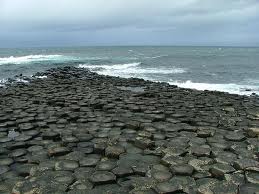In the mid-nineties, the Guinness company ran a contest that entailed writing an advertisement within a certain number of words. First prize for the winning ad was a pub in Ireland, and you could see the pubs themselves on-line. (Winning this prize is the impetus of the plot of the novel The Night Swimmer)
Anyway, I remember my entry and remember loving its major image…150 orphans playing handball against the wide girth of Finn McCool’s arse.
Obviously I didn’t win. (I arrogantly told myself that I didn’t win the contest because it was run by American advertisers who didn’t pick up on the allusion!)
 And I remembered that ad because the image came from Flann O’Brien’s novel, At Swim-Two-Birds. And last week I began a post with a poem “The Workman’s Friend” that came from the same novel. That post got me nostalgic for O’Brien’s work. A man of many pseudonyms, O’Brien is best known for the comic novel At Swim-Two-Birds, although my funnest memories are of The Third Policeman and The Poor Mouth, the latter which O’Nolan wrote in Irish as An Beal Bocht under the pen name Myles na Gopaleen. (And both of which I first read in Connemarra and Sandymount respectively.)
And I remembered that ad because the image came from Flann O’Brien’s novel, At Swim-Two-Birds. And last week I began a post with a poem “The Workman’s Friend” that came from the same novel. That post got me nostalgic for O’Brien’s work. A man of many pseudonyms, O’Brien is best known for the comic novel At Swim-Two-Birds, although my funnest memories are of The Third Policeman and The Poor Mouth, the latter which O’Nolan wrote in Irish as An Beal Bocht under the pen name Myles na Gopaleen. (And both of which I first read in Connemarra and Sandymount respectively.)
At Swim Two-Birds is a rich novel of basically three stories, a meta-fiction in which a character created by the protagonist writes a novel from which his characters gang together with other characters in the novel to avenge their creator. It starts with a university student, who spends more time in his bed and in the pubs than in the classroom. Besides drinking, the student is also writing a novel about a man named Dermot Trellis, a middling writer of Westerns. It is his characters who intermingle with each other, who plot against him, and who attempt to live their lives apart from their author’s intentions, after they drug him.
All of this is mixed with a great deal of Irish mythology and ancient poetry (wryly translated by O’Brien himself). From McCool to Mad King Sweeney, from pookas to fairies, an entire ancient world enters this most modern of novels and interacts with O’Brien’s and Trellis’s fictional creations.
To say there is a circularity to the plot is perhaps inaccurate, and certainly understated. It is more like a mobius strip in another dimension. One thing turns on another to make way for other things that reflect on something else. This jibes very much with the Greek epigraph which translated means “For all things change, making way for each other.” For yes, indeed, one character after another makes way for one other character after yet another.
But most memorably, it is laugh-out-loud funny.
So I began re-reading At Swim-Two-Birds again this week and I started thinking of comic novels in general.
I feel they are best enjoyed by the young.
Think The Gingerman and Catch-22. Think Tom Jones and Confederacy of Dunces. Think Lucky Jim and Reuben, Reuben. Each presents a hero who is outrageously set up against the straight-laced establishment, whether it be the military bureaucracy, the world of academia, or society in general. And each hero takes part in the most outrageous antics–antics that only a young soul could aspire to and believe in. It was once said that an uncle of mine in the army tried to received a medal buck naked, much like–and before–Yossarian in Catch-22. (Unlike Yossarian, he was thrown in the brig.) For my 21st birthday, a good friend of mine wanted to rent a kangaroo suit for me to go bar hopping in, as Sebastian Dangerfield did in The Gingerman. I still chuckle at the peccadilloes that the Scottish poet Gowan McGland gets himself into in the uptight Connecticut suburbs in Reuben, Reuben. (Apparently, the plot was based on Dylan Thomas’s drunken stay in the town in the 1950s.)
But these antics and nose-thumbings are the actions (and dreams) of younger men. And, also, the world has changed. I remember once reading The Gingerman on a bus and being accosted by a woman who yelled that Sebastian Dangerfield was the most misogynistic character in all of literature. I had to admit she was right. In fact, I’d go one further: he is one of the most despicable anti-heroes of all time. Yet, he is still extraordinarily funny.
But, young or old, the truth of all comedy is a certain sadness mixed with the high-jinx. Perhaps the perception of each changes with age–but they both are undoubtedly there. They both need each other.
And so, once more I am churning through At Swim-Two-Birds, and I am still laughing out loud. I just hope that there is no one on my bus protecting the interests of characters who are thought up by characters who are thought up by characters. Cheers.

Relate further for us!
Put a brown paper wrapper on the book (just like we did to our textbooks in grade school) and no bus passengers will be the wiser…!
Good to hear from you, Di. Haven’t seen/heard you since you returned from Ireland. Slainte.